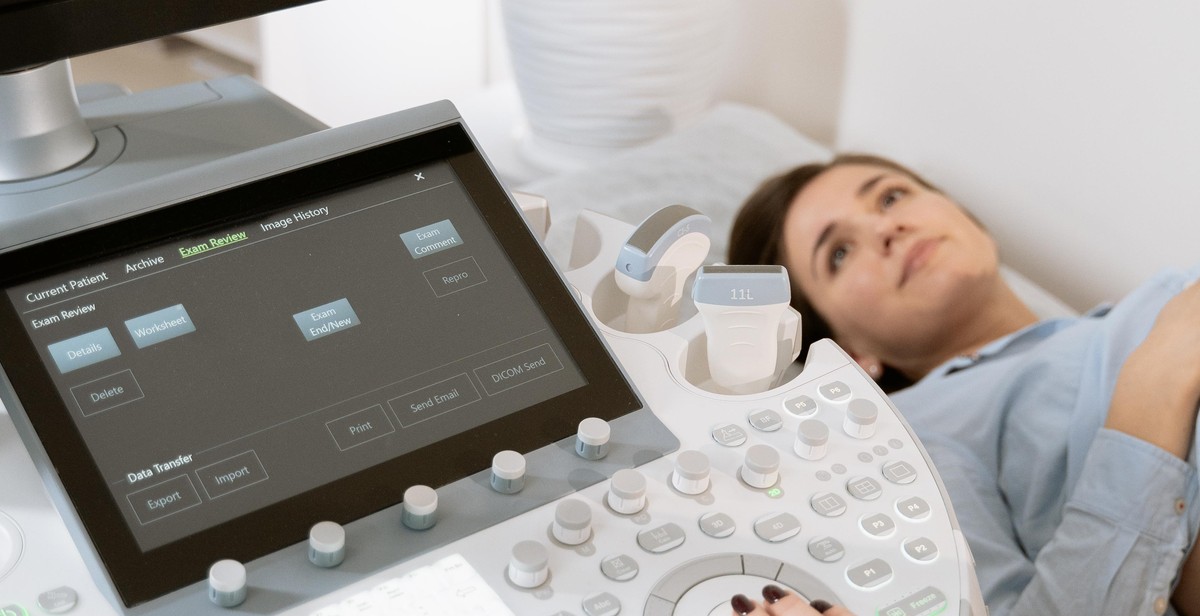Introduction: How to Implement Electronic Health Records in a Hospital Setting
In today’s world, technology has revolutionized the healthcare industry, and electronic health records (EHRs) have become an integral part of the healthcare system. EHRs are digital versions of a patient’s medical history, including diagnoses, medications, test results, treatment plans, and other relevant information. They are designed to improve patient care, reduce medical errors, and increase efficiency in healthcare delivery.
Implementing EHRs in a hospital setting can be a complex and challenging process. It requires careful planning, coordination, and collaboration among healthcare providers, IT professionals, and other stakeholders. In this article, we will discuss the key steps involved in implementing EHRs in a hospital setting, including:
- Assessing the hospital’s readiness for EHR implementation
- Selecting the right EHR system
- Preparing for EHR implementation
- Training staff on EHR usage
- Testing and evaluating the EHR system
- Monitoring and maintaining the EHR system
By following these steps, hospitals can successfully implement EHRs and reap the benefits of improved patient care, increased efficiency, and reduced costs.

Benefits of Electronic Health Records
Electronic Health Records (EHRs) have revolutionized the healthcare industry in recent years. The implementation of EHRs in a hospital setting can provide numerous benefits for both patients and healthcare professionals. Here are some of the key benefits of using electronic health records:
Improved Patient Care
Electronic health records allow healthcare professionals to access patient information instantly from anywhere, allowing for faster and more accurate diagnoses and treatment plans. With EHRs, healthcare providers can easily track a patient’s medical history, medication allergies, and current medications. This information can be accessed quickly and easily, allowing for more efficient and effective patient care.
Enhanced Efficiency and Productivity
Electronic health records can significantly improve hospital efficiency and productivity. With EHRs, healthcare professionals can quickly and easily access patient information, reducing the time spent searching for paper records. This can free up more time for patient care, ultimately leading to better patient outcomes. EHRs can also streamline administrative tasks such as scheduling appointments, billing, and insurance claims.
Increased Patient Safety
Electronic health records can also improve patient safety. With EHRs, healthcare professionals can easily identify potential drug interactions and allergies, reducing the risk of medication errors. Electronic prescribing can also reduce the risk of errors caused by illegible handwriting. Additionally, EHRs can improve communication between healthcare providers, reducing the risk of miscommunication and errors.
| Benefit | Description |
|---|---|
| Improved Patient Care | Allows for faster and more accurate diagnoses and treatment plans. |
| Enhanced Efficiency and Productivity | Reduces time spent searching for paper records and streamlines administrative tasks. |
| Increased Patient Safety | Reduces the risk of medication errors and improves communication between healthcare providers. |

Factors to Consider Before Implementing Electronic Health Records
Electronic Health Records (EHRs) have become an essential tool for healthcare providers to improve patient care and outcomes. However, before implementing EHRs, there are several factors that healthcare organizations need to consider to ensure a successful transition.
Cost
One of the most significant factors to consider before implementing EHRs is the cost. The cost of implementing EHRs can vary depending on the size of the healthcare organization and the complexity of the system. It is essential to have a budget in place that includes the cost of software, hardware, training, and ongoing maintenance.
Training and Support
Implementing EHRs requires extensive training and support for healthcare providers and staff. It is essential to have a comprehensive training plan in place that includes ongoing support to ensure that staff can use the system effectively. This training should include not only technical training but also training on how to use the system to improve patient care.
Data Security and Privacy
Protecting patient data is a top priority for healthcare organizations. Before implementing EHRs, it is essential to ensure that the system is secure and meets all data privacy regulations. This includes implementing measures such as access controls, encryption, and regular audits to ensure that patient data is protected.
Interoperability
Interoperability refers to the ability of different systems to communicate and exchange data seamlessly. Before implementing EHRs, it is essential to ensure that the system can integrate with other systems used by healthcare providers and organizations. This includes ensuring that the system can exchange data with other EHRs, laboratory information systems, and radiology systems.
| Factors to Consider Before Implementing EHRs |
|---|
| Cost |
| Training and Support |
| Data Security and Privacy |
| Interoperability |
Overall, implementing EHRs can be a complex process that requires careful planning and consideration. By taking into account factors such as cost, training and support, data security and privacy, and interoperability, healthcare organizations can ensure a successful transition to EHRs that improves patient care and outcomes.

Steps to Implement Electronic Health Records in a Hospital Setting
Implementing electronic health records (EHR) in a hospital setting can be a daunting task. However, with proper planning, preparation, and execution, the process can be seamless. Here are the steps to take when implementing EHR in a hospital setting:
Assessing Your Hospital’s Needs
The first step in implementing EHR is to assess your hospital’s needs. This involves evaluating your current processes and identifying areas that need improvement. You should also consider the size of your hospital, the number of patients you see, and the types of services you offer. This information will help you choose the right EHR system for your hospital.
Choosing the Right Electronic Health Record System
Choosing the right EHR system is crucial to the success of your implementation. You should consider the features and functionalities of the system, its compatibility with your existing systems, and its cost. You should also look for a system that is user-friendly and easy to navigate.
Preparing Your Hospital for Implementation
Preparing your hospital for EHR implementation involves several steps. You should create a project team that will oversee the implementation process and ensure that everyone is on the same page. You should also create a timeline for the implementation and communicate the changes to your staff and patients. This will help to minimize disruptions and ensure a smooth transition.
Training Your Staff
Training your staff is essential to the success of your EHR implementation. You should provide comprehensive training to all staff members, including physicians, nurses, and administrative staff. This will help them to understand how to use the system effectively and efficiently.
Testing and Go-Live
Before going live with your EHR system, you should conduct thorough testing to ensure that everything is working correctly. This involves testing the system with a small group of users and identifying any issues that need to be addressed. Once you have resolved any issues, you can go live with the system.
Continuous Improvement
After implementing EHR, you should continue to evaluate and improve your system. This involves monitoring the system’s performance and identifying areas that need improvement. You should also seek feedback from your staff and patients to ensure that the system is meeting their needs.
By following these steps, you can successfully implement EHR in your hospital setting and improve the quality of care for your patients.

Challenges of Implementing Electronic Health Records in a Hospital Setting
Electronic Health Records (EHRs) have become an essential tool for healthcare providers to streamline their operations and improve patient care. However, implementing EHRs in a hospital setting can be a challenging and complex task. Here are some of the major challenges that hospitals face when implementing EHRs:
Resistance to Change
One of the most significant challenges of implementing EHRs in a hospital setting is resistance to change. Healthcare providers are used to working with paper records, and switching to a digital system can be a daunting task. Hospital staff may be resistant to change, and it can take time to train them on how to use the new system effectively.
Integration with Existing Systems
Another challenge hospitals face when implementing EHRs is integrating them with existing systems. Hospitals typically have multiple systems in place, such as billing, scheduling, and patient monitoring. Integrating EHRs with these systems can be a complex task that requires a lot of planning and coordination.
Data Entry and Management
Data entry and management are critical components of EHR implementation. Hospitals need to ensure that data is entered accurately and efficiently into the system. They also need to have a plan for managing and updating the data to ensure that it remains accurate and up-to-date.
Risk of Technical Issues
Implementing EHRs in a hospital setting can also come with the risk of technical issues. Hospitals need to ensure that their EHR system is reliable and secure. They also need to have a plan in place for addressing technical issues quickly to minimize any disruptions to patient care.
Conclusion
Overall, implementing EHRs in a hospital setting can be a challenging and complex task. Hospitals need to be prepared to address these challenges and have a plan in place for overcoming them. By doing so, they can reap the benefits of EHRs, including improved patient care, streamlined operations, and better data management.

Conclusion
In conclusion, the implementation of electronic health records in a hospital setting is a complex process that requires careful planning, a team-based approach, and strong leadership. While the benefits of EHRs are significant, including improved patient safety, better care coordination, and increased efficiency, the transition can be challenging. It is important to involve all stakeholders in the process, including physicians, nurses, administrators, and IT staff, to ensure that the system meets the needs of everyone involved.
One key factor in a successful EHR implementation is selecting the right vendor and system. Hospitals should carefully evaluate different options and consider factors such as ease of use, customization options, and integration with existing systems. Training and support for staff is also critical, as is ongoing maintenance and updates to ensure that the system continues to meet the needs of the hospital and its patients.
Ultimately, the successful implementation of EHRs requires a commitment to ongoing improvement and a willingness to adapt to changing needs and technologies. By working together and focusing on the needs of patients, hospitals can leverage the power of electronic health records to improve care and outcomes for all.
References
- HealthIT.gov. (n.d.). Benefits of electronic health records. Retrieved from https://www.healthit.gov/topic/health-it-basics/benefits-electronic-health-records-ehrs
- Office of the National Coordinator for Health Information Technology. (2016). Electronic health records. Retrieved from https://www.healthit.gov/topic/health-it-basics/electronic-health-records-ehr
- Rehman, M. A., & Khan, S. U. (2018). Electronic health record: A roadmap for implementation in developing countries. Healthcare informatics research, 24(2), 73-80.
